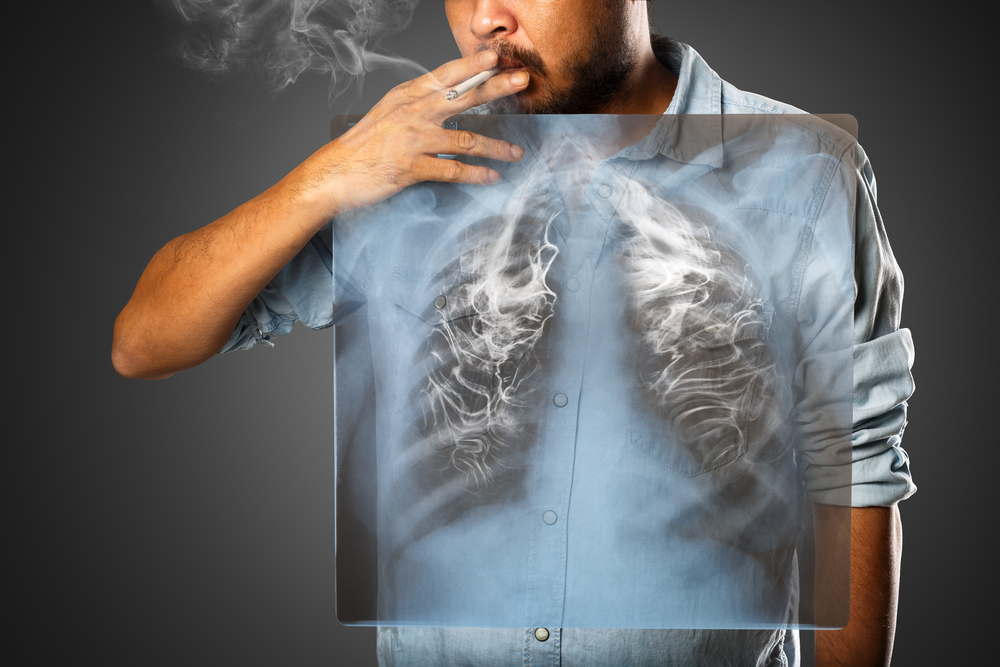Lung cancer is an incredibly deadly disease, taking lives every day – and plenty of people who develop lung cancer had no idea they were are risk for such a disease. Lung cancer can strike anyone, but it’s particularly dangerous for those who have a high risk.
In order to understand your risk for lung cancer, you need to know what actions, habits, and health patterns can lead to this deadly disease. These are the key factors that put you at risk for developing lung cancer.
 Smoking
Smoking
Smoking is responsible for causing most cases of lung cancer, the Mayo Clinic¹ reports. Whether you’re a smoker or have been exposed to significant amounts of secondhand smoke, you’re at a huge risk for lung cancer if cigarettes and cigars are part of your life.
Smoking damages the lungs’ cells, causing repeated damage every time you smoke. Inhaling cigarette smoke also introduces a whole host of cancer-causing substances into your lungs and lung tissue.
Diet
The foods you eat can play a role in your body’s overall health and your risk of developing cancer. Health.com² reports that eating a diet filled with saturated fat and processed carbohydrates can increase your risk of lung cancer specifically. Foods high in saturated fat and processed carbs can make you less healthy and potentially gain weight, which increases your cancer risk.
While all foods are fine in moderation, make sure you aren’t putting too much focus of your daily diet on these potentially dangerous food items.
Family History
A history of lung cancer in your family puts you at a higher risk of developing lung cancer yourself. If you have siblings or parents who have developed lung cancer, your risk is increased according to the American Cancer Society³.
While science is still unclear as to which shared genes might cause the risk of lung cancer to increase, it’s important to consider your immediate family members’ medical history to understand your own risk of this cancer forming.
Exposure to Certain Chemicals
Certain chemicals have been found to increase the risk of developing lung cancer. Both radon and asbestos are high-risk chemicals that can make you more likely to develop this type of cancer.
Radon is a radioactive gas that’s dangerous when inhaled indoors. The American Cancer Society⁴ notes that radon is the second leading cause of lung cancer in the U.S., and it’s the top cause for those who don’t smoke.
Asbestos is equally dangerous, and this chemical has been found to increase the risk of lung cancer in anyone who regularly works with it. If you’ve been exposed to large amounts of asbestos, you have a greater risk for lung cancer.
Aim to Prevent Lung Cancer Before It Begins
Ultimately, the best way to prevent lung cancer is to know your risk factors. If you know you’re at a high risk for lung cancer, you can take action now to decrease your risk. And if you can make changes to your lifestyle, your habits, or other factors, you can work to keep lung cancer from taking your life.


